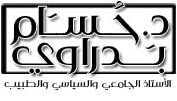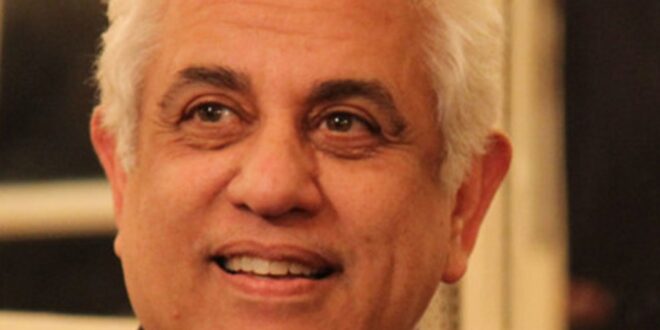The wonders of old Egyptians In medicine
By
Hossam Badrawi
Egyptology, the study of ancient Egyptian history, language, religion, art, and society, is a field that captivates both scholars and the general public alike. The allure of Egypt’s pyramids, the enigma of hieroglyphs, and the grandeur of pharaohs have sparked imaginations for centuries. However, Egyptology is not just about marveling at ancient wonders; it is a rigorous scientific discipline that employs various methods to unlock the secrets of a civilization that thrived for over three millennia.
Over the years, Egyptology has evolved from a predominantly historical and linguistic study into a multidisciplinary science. It now integrates archaeology, anthropology, art history, geology, and even advanced technologies such as DNA analysis and remote sensing.
In recent decades, Egyptology has embraced modern scientific techniques to enhance traditional methods of study. For instance, CT scans and X-rays have revolutionized the examination of mummies, allowing researchers to study the health, diet, and causes of death of ancient Egyptians without damaging the remains. These scans have revealed details such as the presence of diseases like arthritis and dental abscesses, and even evidence of medical procedures like mummification techniques.
DNA analysis has also become a powerful tool in Egyptology. By extracting and sequencing DNA from mummies, scientists can trace the lineage of pharaohs, understand population dynamics, and study the spread of genetic traits over time
Among the most captivating aspects of ancient Egyptian culture is their approach to medicine. While Egypt is often celebrated for its monumental architecture and rich mythology, the civilization’s contributions to the field of medicine are equally profound, offering a fascinating glimpse into the practices that shaped early healthcare.
Egyptian medicine, dating back over 4,000 years, is one of the earliest recorded medical systems. The knowledge and practices of ancient Egyptian physicians were a complex amalgamation of empirical observations, religious beliefs, and herbal remedies. The Ebers Papyrus, one of the most important medical documents from ancient Egypt, serves as a comprehensive record of medical knowledge from around 1550 BCE. It contains over 700 remedies and spells intended to treat a wide array of ailments, from physical injuries to spiritual afflictions.
The Egyptians believed that health was closely linked to spiritual well-being, and that illnesses were often caused by the wrath of gods, evil spirits, or the disturbance of the body’s equilibrium. Consequently, medical treatment in ancient Egypt often involved a combination of practical remedies and spiritual rituals designed to appease deities or expel harmful entities.
Physicians, known as “swnw” in ancient Egypt, held a respected position in society. They were not only medical practitioners but also scholars who studied a wide range of subjects, including anatomy, pharmacology, and theology. Egyptian physicians were often associated with specific temples and were considered intermediaries between the gods and patients. The god Imhotep, who was later deified as the god of medicine, was a highly revered figure and is often credited with significant advancements in the field.
The ancient Egyptians classified their physicians into various specializations, including ophthalmologists, dentists, gastroenterologists, and even proctologists. This level of specialization indicates a sophisticated understanding of the human body and a recognition of the importance of focused expertise in treating specific ailments.
The use of herbal remedies was a cornerstone of Egyptian medicine. Plants such as garlic, juniper, myrrh, and aloe were commonly used to treat a variety of conditions. For example, garlic was believed to boost immunity and was prescribed to treat infections, while aloe was used for its soothing and healing properties on burns and skin irritations.
Surgical procedures in ancient Egypt were surprisingly advanced for the time. Archaeological evidence, including mummies with healed fractures and trepanation (drilling holes in the skull), suggests that Egyptian surgeons were skilled in setting bones, performing amputations, and conducting cranial surgery. Surgical instruments such as scalpels, forceps, and cautery tools have been found in tombs, indicating the importance of surgery in their medical practice.
The Intersection of Magic and Medicine
Magic played an integral role in Egyptian medicine, blurring the lines between science and spirituality. Spells, amulets, and incantations were commonly used alongside physical treatments to cure diseases. The belief was that by invoking the names of gods and using sacred objects, one could protect the body from harm and drive out malevolent forces.
The influence of ancient Egyptian medicine extended beyond the borders of the Nile Valley. Greek scholars, including Hippocrates and Galen, studied Egyptian medical texts and incorporated their knowledge into their own medical practices, which later laid the foundation for Western medicine.
The study of Egyptology and medicine today continues to yield insights into how the ancient Egyptians understood the human body and treated disease. Modern scholars and physicians often turn to ancient Egyptian practices for inspiration, particularly in the fields of herbal medicine and holistic healing.
I am sure the future of Egyptians will connect to their amazing past
 Dr. Hossam Badrawi Official Website
Dr. Hossam Badrawi Official Website


